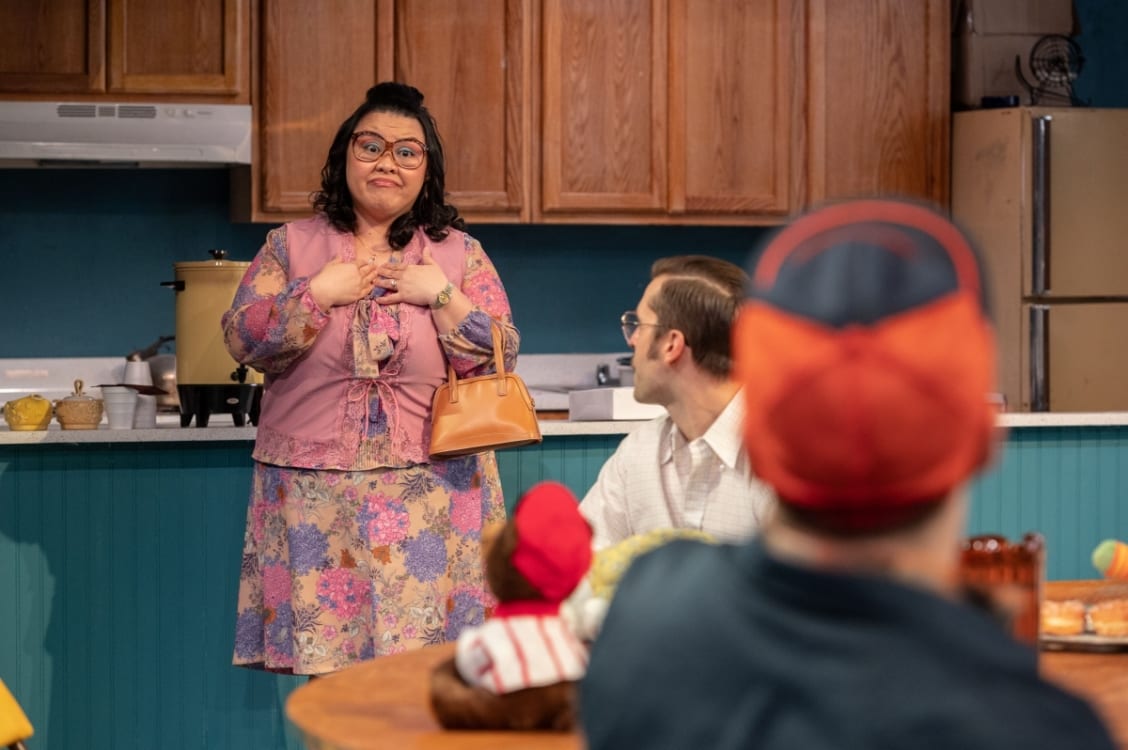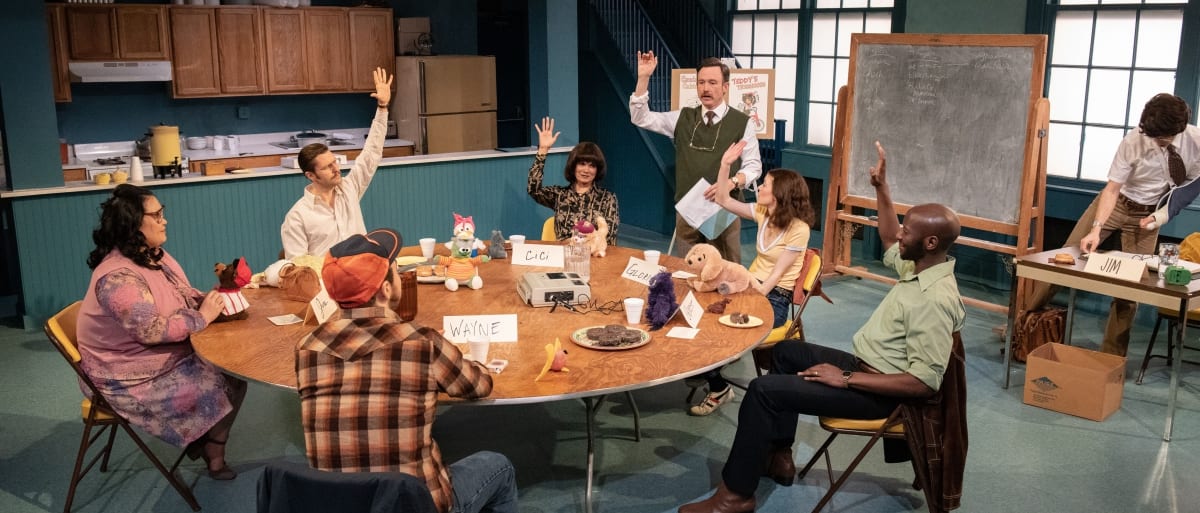The Mad Ones, a theater ensemble who compose collaboratively through a process that involves prolonged improvisation, character-building workshops, and writing retreats, produce such deeply realized characters that it’s almost uncanny—and thrilling to see. Following their encore run of “Miles for Mary,” a brilliant dissection of workplace passive-aggressiveness, at Playwrights Horizons in early 2018, they now kick off Ars Nova’s new home at Greenwich House with another must-see production, “Mrs. Murray’s Menagerie.”
The director is Lila Neugebauer, a Mad Ones co–artistic director, along with writer/performers Marc Bovino, Joe Curnutte, Michael Dalto, and Stephanie Wright Thompson. The play’s ostensibly mundane setting is a focus group for a local Philadelphia children’s TV show (which shares its title with the play’s), in the 1970s.
The Mad Ones imbue the ordinary with hilarity. The play opens with Jim (Bovino), a beleaguered associate for the firm conducting the focus group, his left arm in a cast, preparing the room, which consists of a round wooden table, a chalkboard, a kitchenette, and a stairway leading to an upstairs office. The office is locked so Jim has to dial someone on the rotary phone for assistance, and here and all through his one-armed arrangements, the audience is laughing, yet nothing is done as slapstick. This tone of zaniness that is also realistic is something the Mad Ones have mastered, as they capture the inherent awkwardness of so much of human interaction.

The lights go out, the theme song from “Mrs. Murray’s Menagerie” plays, and when the lights go up again the focus-group participants are in place around the table, Jim is seated at a desk beside the chalkboard, and Dale (Brad Heberlee), the focus-group leader, is in the middle of a sentence: “—and, and hopefully this will be a bit fun!” The words are prophetic, since what the Mad Ones offer is indeed fun—but also, at times, tense and fraught, as fault lines of race and gender are subtly explored.
Each participant begins by reading a description of themselves as written by one of their children. There is June (Carmen H. Herlihy), a literal-minded woman who doesn’t indulge small-talk; Ernest (Phillip James Brannon), an intelligent, practical-minded book-store owner; Roger (Curnutte), who works in sales and whose apparent friendliness reeks of smarminess; Wayne (Dalto), a gruff machinist; Celeste, or Cici (January LaVoy), who exudes poise and whose six-year-old says that his mother’s job is “being the boss”; and Gloria (Thompson), a single mother, awkward and insecure, cringing after everything she says. Among this group, as among the characters on the TV show, there is diversity of race, gender, and class. Each writer/performer creates a fully rounded character, down to the the smallest gestures, facial expressions, or half-formed utterances, with the assistance of the spot-on costume design (Ásta Bennie Hostetter) and wig and makeup design (Alfreda Howard).
The play’s structure is question and answer: Dale asks questions about characters (including puppets) on “Menagerie,” and each participant answers, often in one word or phrase. There doesn’t appear to be much conflict early on, but seemingly insignificant lines plant the seeds of conflicts that will grow in the play’s second half. The explorations of power that ensue are so intensely grounded in character that the play never pivots to the preachy or didactic.
Anyone who saw “Miles for Mary” will recall the marvelous eruption of resentment that occurs during a presentation on how to use a multi-line phone. There is no similar boiling over in “Mrs. Murray’s Menagerie”—the tension becomes palpable but it stays at a simmer. At issue are interpretations of a spin-off TV show featuring a rabbit named Candace, who becomes a Rorschach test of sorts for ideas on responsibility and privilege. Roger becomes the antagonist, turning defensive and demeaning, at one point placing his hand on Cici’s leg as he makes a creepy comment in a pretend joking manner. No one steps in or addresses this directly, but the lingering look on Cici’s face shows the pain such encounters cause, in part because they are tolerated. Dale is quick to retreat to the conflict-averse language of affirming everyone’s viewpoint as valid, thus shielding Roger.
There’s simply something wonderfully different about a Mad Ones production because of their unique method of composition and character-inhabiting. But at its core, “Mrs. Murray’s Menagerie” is great character-driven drama with a dose of all-too-real absurdity.

